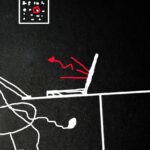Broad structural change is necessary if this model is ever to take off in Australia.
EConsults could increase access to specialist care and improve GP-physician relationships, if implemented well – but structural change is needed to allay concerns over remuneration and time allocation, say Australian specialists.
With a 13% rise in referrals from GPs to non-GP specialist over a decade (2006-07 to 2015-16) and 28% of patients waiting more than four weeks for non-GP specialist care, there is a growing need for easy access to timely specialist advice.
EConsults, in which GPs securely share case information with non-GP specialists for advice and support, rather than referring, have been successfully incorporated internationally as a means of asynchronous health provision.
But while the concept of an efficient platform for GP and non-GP specialist communication may appeal, concerns remain over implementation, according to a study recently published by the Australian Journal of Primary Health
The study investigated what 14 RACP fellows, across a range of specialties, genders and ages, thought of implementing eConsults, with a 72-hour turnaround time, in Australia.
According to the study, specialists generally felt this model would improve access to specialist advice and could be of “considerable benefit” for non-urgent consultations.
“RACP fellows agreed this could improve access to timely specialist advice, place downward pressure on outpatient face-to-face clinic waiting times and reduce unnecessary patient travel.”
The fellows interviewed felt that these asynchronous consultations might provide opportunity for ongoing GP education and reduce the need for future referrals or non-GP specialist advice.
But remuneration and time allocation were a recurring concern among study participants.
“It is clear from our work that Australian physicians require reassurance that they will not be pressured to add this work to existing consultation numbers and demand without support,” the researchers said.
“They also did not see the model as workable if it intruded into out-of-work time.”
According to the researchers, for primarily public health physicians the concerns centred around time constraints.
“Without dedicated time, participants were concerned that uptake would be low among their colleagues, and that the 72-h turnaround time would not be feasible, which in turn, would reduce the effectiveness of the model,” they said.
But for private physicians, concerns were around matching existing consulting rates to face-to-face consultation rates.
Ultimately, the RACP fellows felt broad structural change would be necessary to make the model viable across Australia.
“All participants viewed the success of a future eConsult model as contingent on the formal structures that would be required to underpin it.
“They were of the opinion that eConsults would represent a fundamental change to the primary–secondary care interface, and as such, would require a proper administrative and governance structure.”
The change would require incorporating suitable and safe technology, ensuring indemnity was addressed with providers and administrative support.
“All participants viewed a formal administrative structure as essential to the success of the eConsult model of care,” said the researchers.
“An informal or haphazard approach would result in low provider satisfactions and low uptake among both GPs and non-GP specialists.”
Speaking to The Medical Republic, dermatology specialist and associate professor at the University of Queensland Jim Muir discussed an educational and resourcing platform, Tele-Derm, that facilitates advice exchange between dermatology specialists and other doctors and is currently up and running in Australia.
Professor Muir is one of four moderators of the Tele-Derm service that is provided through ACRRM, alongside Dr Dan Kennedy, Dr Rachael Foster and Dr John Bingley.
The Tele-Derm online service offers free advice and education, contributing to CPD point, to all rural doctors, whether they are ACRRM members or not, and now has around 4000 doctors registered on the platform.
Tele-Derm combines hundreds of case studies, videos, how-tos with telemedicine platform to bolster specialist advice with educational support, allowing 80% of the cases received to be managed locally by GPs, said Professor Muir.
But according to Dr Muir the time requirement for GPs – about half an hour for the initial case entry plus an average of two to eight “back and forths” – would benefit from a relevant MBS item number.
“[An MBS item] would recognise the extra time, the extra effort, the extra responsibility that doctors are taking on,” he said.
As a salaried specialist, the flexible nature of the consultations meant he could fit consults around his schedule, said Professor Muir.
“It’s so convenient for me, which is important to get specialists, or any doctor, to stay on board,” he said.
According to Professor Muir the platform, which is funded by DoHAC, receives many consult requests from remote areas of the NT, WA and Queensland and is particularly crucial for Indigenous and other rural patients concerned about travelling.
“I think the big thing to get across is it’s available and it works. It’s easy.
“Distance isn’t the only barrier to a specialist opinion … people shouldn’t have to wait three months, six months to see a [specialist].”





